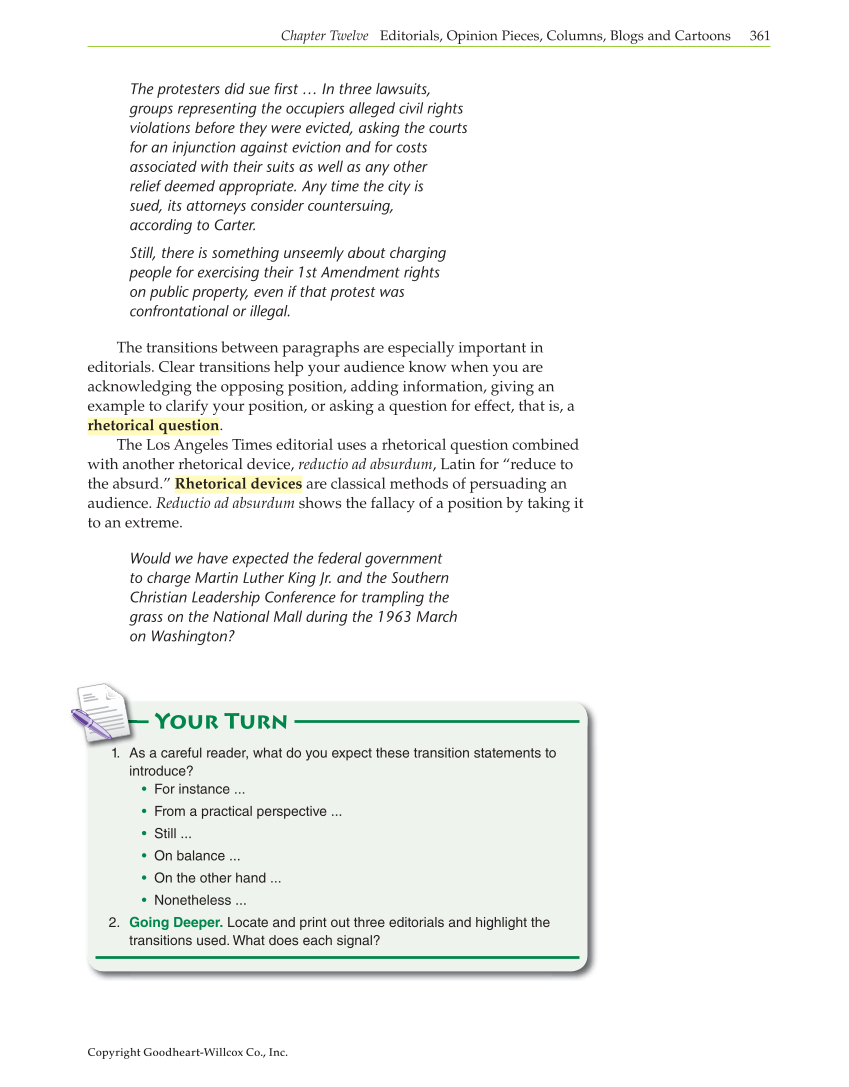Copyright Goodheart-Willcox Co., Inc. Chapter Twelve Editorials, Opinion Pieces, Columns, Blogs and Cartoons 361 The protesters did sue fi rst … In three lawsuits, groups representing the occupiers alleged civil rights violations before they were evicted, asking the courts for an injunction against eviction and for costs associated with their suits as well as any other relief deemed appropriate. Any time the city is sued, its attorneys consider countersuing, according to Carter. Still, there is something unseemly about charging people for exercising their 1st Amendment rights on public property, even if that protest was confrontational or illegal. The transitions between paragraphs are especially important in editorials. Clear transitions help your audience know when you are acknowledging the opposing position, adding information, giving an example to clarify your position, or asking a question for effect, that is, a rhetorical question. The Los Angeles Times editorial uses a rhetorical question combined with another rhetorical device, reductio ad absurdum, Latin for “reduce to the absurd.” Rhetorical devices are classical methods of persuading an audience. Reductio ad absurdum shows the fallacy of a position by taking it to an extreme. Would we have expected the federal government to charge Martin Luther King Jr. and the Southern Christian Leadership Conference for trampling the grass on the National Mall during the 1963 March on Washington? 1. As a careful reader, what do you expect these transition statements to introduce? • For instance ... • From a practical perspective ... • Still ... • On balance ... • On the other hand ... • Nonetheless ... 2. Going Deeper. Locate and print out three editorials and highlight the transitions used. What does each signal? Your Turn 1 A
